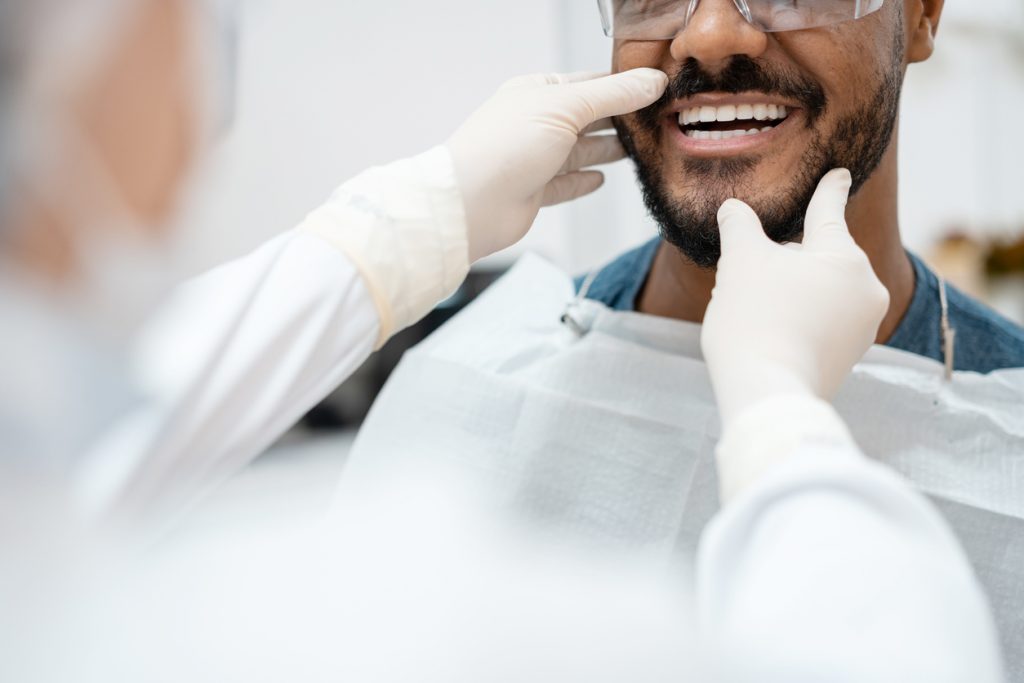
A beautiful smile not only enhances our appearance but also plays a crucial role in our overall health. Maintaining optimal oral health involves more than just regular brushing and flossing. Sometimes, a periodontist, like Dr. Scharf, may recommend a procedure known as an occlusal adjustment. This procedure ensures that your bite is in perfect harmony. In this blog post, we will review what occlusal adjustment is, why Dr. Scharf might suggest it, and how he performs the procedure.
What Is Occlusal Adjustment?
Occlusal adjustment, also known as bite adjustment, is a procedure to correct the contact of the teeth with each other. This process focuses on balancing the forces exerted on the teeth and optimizing the overall occlusion or the way the upper and lower teeth fit together.
Why Might a Periodontist Recommend Occlusal Adjustment?
Ever wondered why your dentist or periodontist might suggest tweaking your bite? Well, it’s not just about the aesthetics—it’s a game-changer for your oral health. Let’s look at why.
Temporomandibular Joint (TMJ) Disorders: Occlusal issues can contribute to the development of temporomandibular joint disorders (TMD). TMD is a condition that affects the jaw joint and surrounding muscles. By adjusting the occlusion, Dr. Scharf can alleviate stress on the TMJ, reducing the risk of TMD-related symptoms. Such symptoms could include jaw pain, headaches, and clicking sounds.
Bruxism (Teeth Grinding): Individuals who grind their teeth, a condition known as bruxism, often experience uneven wear on their teeth. Occlusal adjustment can help distribute the forces more evenly, preventing excessive wear and reducing the impact of bruxism on oral structures.
Tooth Mobility and Sensitivity: Malocclusion, or improper alignment of teeth, can lead to tooth mobility and increased sensitivity. Occlusal adjustment can address these issues by redistributing the biting forces, improving stability, and reducing discomfort.
How Is Occlusal Adjustment Performed?
Occlusal adjustment involves a meticulous process, beginning with a comprehensive assessment of your bite. From using advanced diagnostic tools like X-rays and impressions to pinpointing bite interferences, each step is a precise exploration into achieving perfect balance. Let’s unravel the different stages that ensure your smile is in optimal harmony.
Evaluation: The process begins with a thorough examination of the patient’s bite. This may involve using diagnostic tools such as X-rays, impressions, and bite analysis to identify areas of occlusal imbalance.
Mapping Bite Interference: Dr. Scharft identifies areas where the teeth do not properly meet during biting and chewing, known as bite interference. These areas may be marked or recorded for targeted adjustment.
Adjustment: Using various tools, Dr. Scharf carefully removes or reshapes small amounts of enamel from specific teeth to achieve a more harmonious bite. This process may be repeated until the desired occlusal balance is achieved.
Follow-Up: Patients are typically monitored post-procedure to ensure that the adjustments have effectively addressed the original issue. Dr. Scharf may make additional refinements if necessary.
Harmonizing Your Bite
Occlusal adjustment is a valuable dental procedure to optimize the bite and promote overall oral health. By addressing issues such as TMD, bruxism, and tooth sensitivity, Dr. Scharf can enhance the harmony of your bite. The goal is to achieve improved comfort and functionality.
If you are experiencing symptoms like jaw pain, headaches, or tooth mobility, consult with Dr. Scharf to determine whether occlusal adjustment is the right solution for you. A balanced bite is both aesthetically pleasing and a key component of a healthy and functional smile.
For more information about occlusal adjustment for a healthier bite
Schedule a Visit with Dr. Scharf

